2017-11-09 - Nº 132
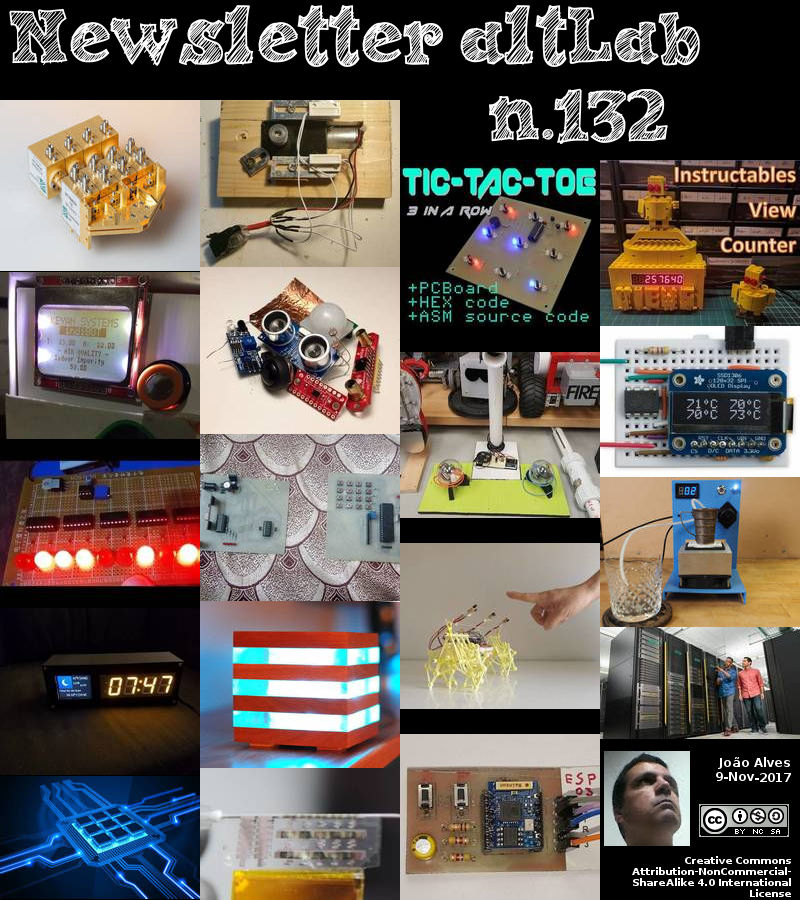
Editorial
Esta é a Newsletter Nº 132 que se apresenta com o mesmo formato que as anteriores. Se gostar da Newsletter partilhe-a!
Todas as Newsletters encontram-se indexadas no link.
Esta Newsletter tem os seguintes tópicos:
Faz anos hoje que nascia, em 1801, Gail Borden. Este fabricante norte-americano foi responsável pela invenção de um método comercial do leite condensado, aquecendo-o no vácuo para preservá-lo e investigou outros concentrados de alimentos. Ele começou com um processo que cozinhava extractos de carne com farinha para formar um biscoito de carne capaz de ser armazenado durante um prazo longo. Quando ele criou uma maneira de preservar o leite, condensando-o, dessa forma ele criou um mercado nas grandes cidades que estavam distantes das fontes do leite, além de fornecer os militares, viajantes e marinheiros.
Faz também anos hoje que nascia, em 1885, Hermann Weyl. Este matemático germano-americano fez diversas contribuições na matemática que permitiram ligar a matemática pura e a física teórica. Adicionalmente ele fez contribuições significativas para a mecânica quântica e a teoria da relatividade. Ele tentou incorporar o electromagnetismo no formalismo geométrico da relatividade geral. Ele produziu a primeira teoria de referência em que o campo electromagnético de Maxwell e o campo gravitacional aparecem como propriedades geométricas do espaço-tempo. Foi ele que propôs a teoria de "wormhole" como a teoria da matéria ligada com a análise de massa de energia de campo electromagnético. Contudo não foi ele que lhe deu o nome "wormhole".
Faz igualmente anos hoje que nascia, em 1897, Ronald G.W. Norrish. Este químico britânico entre 1949 e 1965, colaborou com seu ex-aluno George Porter no desenvolvimento de fotólise e espectroscopia cinética para a investigação de reações muito rápidas. Norrish também contribuiu significativamente para a química quando corrigiu a lei de Draper. Em meados do século XIX, John Draper propôs que a quantidade de mudança fotoquímica seja proporcional à intensidade da luz multiplicada pelo tempo em que atua. Norrish mostrou que a taxa era de fato proporcional à raiz quadrada da intensidade da luz. Foi laureado com o prémio Nobel da Química em 1967 com o compatriota George Porter e o alemão German Manfred Eigen pelos seus estudos em reacções químicas muito rápidas.
Por fim, faz anos hoje que nascia em 1934, Carl Sagan. Este astrónomo, cosmólogo, astrofísico e astrobiologo nascido em Brooklyn nos Estados Unidos da América ficou conhecido pela excelente capacidade de comunicação que tinha e pela sua série de televisão Cosmos. Tendo publicado mais de 600 papers científicos foi também autor, co-autor ou editor de mais de 200 obras literárias. Ele pesquisou a atmosfera de Vénus, as mudanças sazonais em Marte, condições de superfície dos planetas. Sagan foi igualmente uma figura importante na busca por inteligência extraterrestre. Ele exortou a comunidade científica a ouvir com grandes radiotelescópios para sinais de formas de vida extraterrestres inteligentes - projeto SETI. Sagan também desempenhou um papel proeminente no programa espacial dos EUA, com seu envolvimento nas expedições espaciais da Mariner, Viking e Voyager.
Na semana que passou ficámos a saber que a Intel se associou à AMD para o desenvolvimento de um CPU de alto desempenho com uma GPU especializada para permitir a criação de dispositivos mais finos. O novo produto, que será parte da 8a geração de CPU Intel Core, junta o processador Intel Core da série H de alta performance, a memória de alta largura de banda de segunda geração (HBM2) e um chip gráfico discreto de terceiros personalizado para a Intel do Grupo Radeon Technologies da AMD - tudo num único processador.
Também esta semana que passou, a UBER fez o anuncio que irá colaborar com a NASA no projecto do carro voador. No WebSummit em Lisboa, o chefe de produto da UBER, Jeff Holden, anunciou que a empresa está a acrescentar uma terceira cidade, Los Angeles, à sua lista de locais onde espera pilotar seu serviço de táxi aéreo até 2020. Los Angeles junta-se a Dallas-Fort Worth e Dubai à medida que as cidades anunciaram trabalhar com a Uber no programa. Juntar-se à NASA é um grande passo para a UBER. Primeiro, permite que a empresa promova a aprovação da agência espacial altamente conceituada aos cépticos. Também codifica a participação da UBER no projecto de gestão de tráfego não tripulado (UTM) da NASA, que foi introduzido pela primeira vez em 2015 para regular o tráfego de drones. Como Ben Popper, da The Verge, escreveu há dois anos: "É uma tentativa de pôr fim à atmosfera do Oeste Selvagem que tem sido a norma para os sistemas aéreos sem passageiros (UAS) nos últimos cinco anos, substituindo-o por um sistema de controlo de tráfego aéreo de próxima geração."
Por fim, Richard Browning, quebrou esta semana o recorde para a velocidade mais rápida usando um fato com jactos controlados pelo corpo. Este inventor Britânico de 38 anos, conseguiu atingir cerca de 52 km/h no fato que ele projectou gastando £40,000. O fato descola verticalmente e pode ser controlado movendo os braços, enquanto um ecran dentro do capacete fornece informação sobre o consumo de combustível.
Na Newsletter desta semana apresentamos diversos projetos de maker.
 João Alves ([email protected])
João Alves ([email protected])
O conteúdo da Newsletter encontra-se sob a licença  Creative Commons Attribution-NonCommercial-ShareAlike 4.0 International License.
Creative Commons Attribution-NonCommercial-ShareAlike 4.0 International License.
Novidades da Semana

New Intel Core Processor Combines High-Performance CPU with Custom Discrete Graphics from AMD to Enable Sleeker, Thinner Devices
"We often talk about our focus on driving innovation for the enthusiast community, a targeted but growing segment of the PC market. This point is underscored by what we have been delivering with our Intel® Core™ X-series processors, Intel® Core™ H-series mobile processors and, more recently, the first of our 8th Gen Intel® Core™ desktop processors. Each product line offers a range of new capabilities, workloads and form factors to cater to the diverse needs of enthusiasts. But as we looked at this lineup, we recognized an opportunity: thinner, lighter, more powerful enthusiast mobile platforms that deliver a premium experience. Currently, most enthusiast mobile PCs have Intel Core H-series processors plus higher-powered discrete graphics1, resulting in systems that average 26 mm in height. Compare this to thin and light laptops that are trending down to 16 mm or less, with some even as thin as 11 mm." [...]
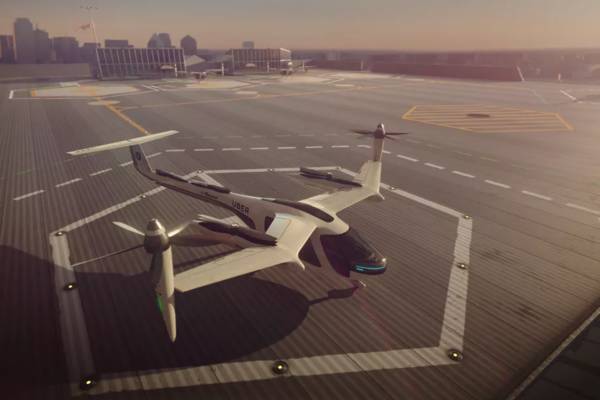
Uber’s ‘flying cars’ could arrive in LA by 2020 — and here’s what it’ll be like to ride one
"Uber’s “flying car” project Elevate came whizzing back into view today with a number of key announcements about where it will first appear, who will be working on it, and how this futuristic service will look when it ultimately takes off. In a speech at the Web Summit in Lisbon today, Uber’s head of product Jeff Holden announced that the company is adding a third city, Los Angeles, to its list of places where it hopes to pilot its aerial taxi service by 2020. LA joins Dallas-Fort Worth and Dubai as cities announced to be working with Uber on the program. Holden also said that Uber has signed a Space Act Agreement with NASA to create a brand-new air traffic control system to manage these low-flying, possibly autonomous aircraft. And to round it all out, Uber released a glossily produced video to demonstrate what using its aerial taxi service would look like from the perspective of a working mom who just wants to get home to her kids. As you can see, it’s all very utopian." [...]
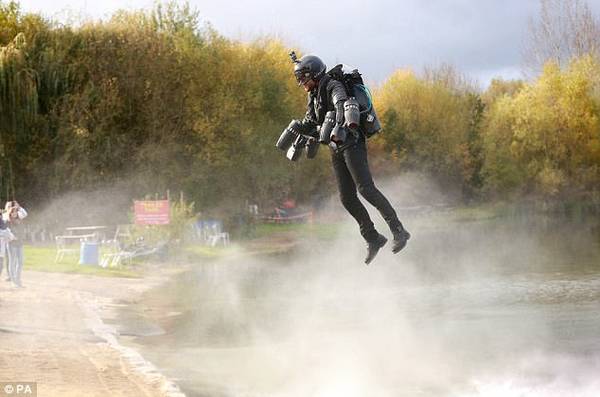
Rocket man blasts into the history books at a world record-breaking 32mph - the fastest ever travelled by a jet suit
"Mr Browning, 38, took to the air at Lagoona Park in Reading, Berkshire, on Tuesday to try to beat the 30mph benchmark set by Guinness World Records. Looking like something out of a science fiction movie, he slowly rose into the air and hovered two metres off the ground. His first two attempts were unsuccessful, as he was unable to get enough momentum. But on his third and final try he managed to get up to speed – before mistiming a turn and dropping into a lake. Mr Browning said: ‘I am delighted we have set the record, and I have no doubt that this is just the beginning. ‘I really think we can go on and smash it." [...]
Outras Notícias

Hewlett Packard Enterprise Unveils the World’s Most Scalable and Modular In-Memory Computing Platform
"Today, Hewlett Packard Enterprise (HPE) revealed the world’s most scalable and modular in-memory computing platform, HPE Superdome Flex. The platform enables enterprises of any size to process and analyze massive amounts of data and turn it into real-time business insights. In a world transformed by exponential data growth, customers face a complex dilemma – how to handle unprecedented data flows while maintaining business continuity and agility to quickly respond to business changes. One way companies are tackling this challenge is by leveraging in-memory databases, such as SAP HANA, Oracle Database In-Memory and Microsoft SQL Server. HPE is the global leader for SAP HANA as approximately 50 per cent of SAP HANA server deployments are on HPE systems. In order to harness the full value of in-memory computing, the underlying infrastructure must be capable of addressing large data sets and process analytics without slowing transactions to achieve real-time insights." [...]

Latest Single-Wire Serial EEPROM from Microchip Enables Remote Identification
"A single-wire, two-pin Electrically Erasable Programmable Read-Only Memory (EEPROM) device with a 2.7V to 4.5V operational voltage range is now available from Microchip Technology Inc. (NASDAQ: MCHP). The AT21CS11 is ideal for identifying and authenticating remote items, such as cartridges or cables, where space for electronic components is limited. Each AT21CS11 contains both a preprogrammed unique serial number and five EEPROM memory sections. Any or all of the memory sections can be permanently locked by the end-equipment manufacturer to allow tracking of products and identifying attachments to assist with counterfeit prevention. The EEPROM device is ideal for customers who need to warranty their product or prevent counterfeits and ensure proper continued operation of their goods through authorized replacements. The AT21CS11 is the second single-wire EEPROM offered by Microchip." [...]

mbed OS 5.6.4 released
"We are pleased to announce the Mbed OS 5.6.4 release is now available. This is the latest patch release based on the feature set introduced by Mbed OS 5.6. Summary This patch release includes new target support for LPC1769 and NUCLEO_L496ZG. There was an issue on the NUCLEO F767ZI (5294) where 'Error -3004' was returned while trying to establish a socket connection. We have added a workaround to fix this issue. A full solution will be available in a later revision of STM32 F767 MCUs." [...]
Ciência e Tecnologia
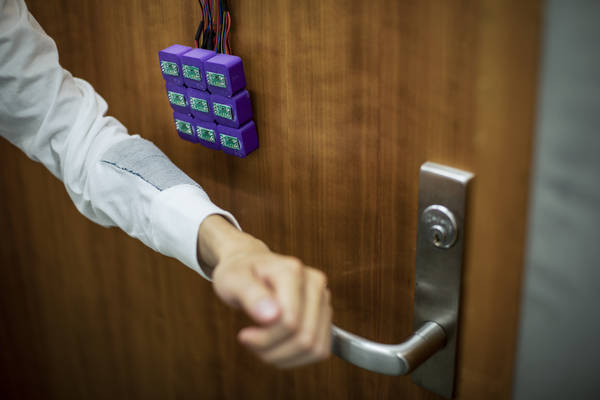
How to store information in your clothes invisibly, without electronics
"A new type of smart fabric developed at the University of Washington could pave the way for jackets that store invisible passcodes and open the door to your apartment or office. The UW computer scientists have created fabrics and fashion accessories that can store data — from security codes to identification tags — without needing any on-board electronics or sensors. As described in a paper presented Oct. 25 at the Association for Computing Machinery’s User Interface Software and Technology Symposium (UIST 2017), they leveraged previously unexplored magnetic properties of off-the-shelf conductive thread. The data can be read using an instrument embedded in existing smartphones to enable navigation apps. “This is a completely electronic-free design, which means you can iron the smart fabric or put it in the washer and dryer,” said senior author Shyam Gollakota, associate professor in the Paul G. Allen School of Computer Science & Engineering. “You can think of the fabric as a hard disk — you’re actually doing this data storage on the clothes you’re wearing.” Most people today combine conductive thread — embroidery thread that can carry an electrical current — with other types of electronics to create outfits, stuffed animals or accessories that light up or communicate." [...]
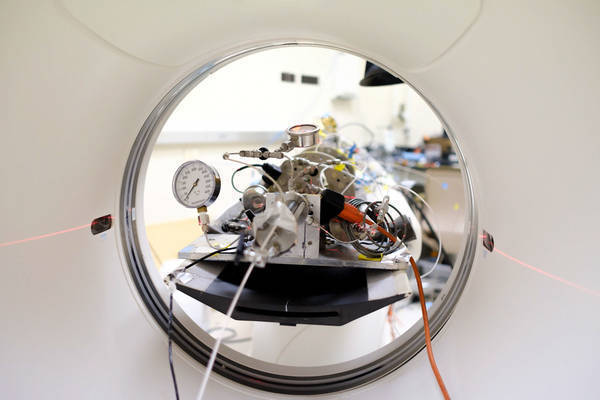
New techniques for removing carbon from the atmosphere
"As the world continues to burn 100 million barrels of oil a day – a rate that is expected to continue for the next 50 years – Stanford Earth researchers are developing greener ways of extracting the oil and mitigating the resulting greenhouse gases. Of the approximately two dozen medical CT scanners scattered throughout Stanford’s main campus and medical centers, two can be found nestled in basement labs of the Green Earth Sciences Buildings. The scanner duo is being put to some decidedly off-label uses in research led by Anthony Kovscek, a professor of energy resources engineering at Stanford’s School of Earth, Energy & Environmental Sciences (Stanford Earth). The machines in this case have helped scientists extract oil and gas more efficiently, and are now revealing ways of storing carbon dioxide (CO2) deep underground while the world continues to rely on fossil fuels for energy and transportation. The motorized tables that would normally slide patients in and out of the scanners’ openings instead support machines made from a daunting array of connected pressure vessels, nozzles and gauges shrouded beneath wires and tubing. The larger of the two scanners is about the length of a person and looks like something devised by a mad scientist to power a time-traveling DeLorean." [...]

Scientists create magnetic system that transforms heat into motion
"Scientists have discovered a pioneering new technique to transform ambient heat into motion in nanoscale devices - which could revolutionise future generations of data storage and sensors. The innovative new study by a team of international researchers including Professor Gino Hrkac from the University of Exeter, created a magnetic system capable of extracting thermal energy using a specific type of gear, known as a ratchet. This thermal ratchet is made from a material known as “artificial spin ice” which comprises of a number of tiny nanomagnets - made of the nickel-iron alloy Permalloy and which are 200 times smaller than the diameter of a human hair. The technique is also able to turning magnetic energy into the directed rotation of the magnetization. After magnetising their sample, the researchers observed that the magnetisation rotated in only one of two possible directions, without an obvious reason why one way should be preferred over the other. The study is published in the leading scientific journal, Nature Materials." [...]

New Theory Addresses How Life on Earth Arose from the Primordial Muck
"Life on Earth originated in an intimate partnership between the nucleic acids (genetic instructions for all organisms) and small proteins called peptides, according to two new papers from biochemists and biologists at the University of North Carolina at Chapel Hill and the University of Auckland. Their “peptide-RNA” hypothesis contradicts the widely-held “RNA-world” hypothesis, which states that life originated from nucleic acids and only later evolved to include proteins. The new papers – one in Molecular Biology and Evolution, the other in Biosystems – show how recent experimental studies of two enzyme superfamilies surmount the tough theoretical questions about how complex life emerged on Earth more than four billion years ago. “Until now, it has been thought to be impossible to conduct experiments to penetrate the origins of genetics,” said co-author Charles Carter, PhD, professor of biochemistry and biophysics at the UNC School of Medicine. “But we have now shown that experimental results mesh beautifully with the ‘peptide-RNA’ theory, and so these experiments provide quite compelling answers to what happened at the beginning of life on Earth.” The special attributes of the ancestral versions of these enzyme superfamlies, and the self-reinforcing feedback system they would have formed with the first genes and proteins, would have kick-started early biology and driven the first life forms toward greater diversity and complexity, the researchers said. Co-author Peter Wills, PhD, professor of physics at the University of Auckland, said, “Compared to the RNA-world hypothesis, what we’ve outlined is simply a much more probable scenario for the origin of life." [...]
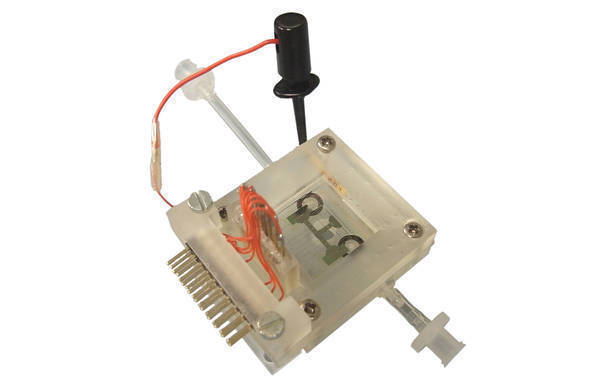
A powerful duo
"An important aspect of pharmacology is understanding how active drug ingredients cross-react with endogenous molecules. But until now, such reactions could only be determined after the event. The precise details of the interacting factors remained unclear. Fraunhofer researchers have developed a new technology that enables biochemical reactions to be monitored from start to finish at the single-molecule level. All that is needed to perform such tests are tiny sample droplets of the reagent solution – so tiny that they are barely visible to the naked eye. The droplets change shape when an electric voltage is applied, allowing them to be pulled apart, moved in different directions, or split into separate molecules." [...]

Lightwave controlled nanoscale electron acceleration sets the pace
"A team of physicists from Rostock University, the Max Born Institute in Berlin, the Ludwig-Maxmilians-Universität Munich, and the Max Planck Institute of Quantum Optics in Garching has now shown how electrons can be accelerated in an extreme and well-controlled way with laser light, while crossing a silver particle of just a few nanometers. Of particular importance for potential applications is the ability to manipulate the acceleration process, known as a swing-by maneuver from space travel, with the light waveform. This could facilitate an all-optical generation of attosecond electron pulses. When metal clusters, small nanoparticles consisting of just a few thousand atoms, are exposed to intense laser light, electrons inside the particle are excited to a swinging collective motion. The electron cloud’s motion, a plasmon, can be excited resonantly with light of a suitable color leading to very high amplitudes and an enhanced electric field inside the cluster. In the experiment, which was conducted at the Institute of Physics in Rostock, a team of researches around Prof. Thomas Fennel has now deliberately exploited this enhanced near-field." [...]
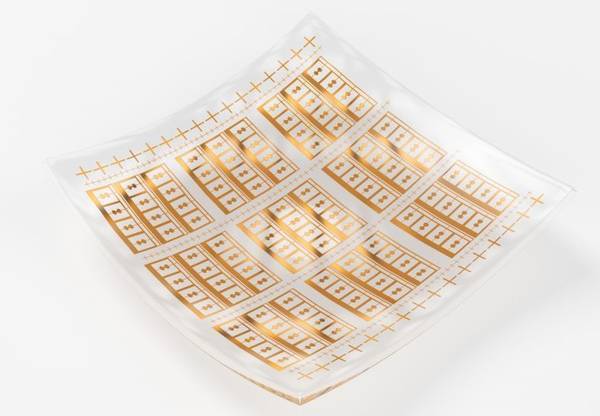
Graphene enables high-speed electronics on flexible materials
"A flexible detector for terahertz frequencies has been developed by Chalmers researchers using graphene transistors on plastic substrates. It is the first of its kind, and can extend the use of terahertz technology to applications that will require flexible electronics, such as wireless sensor networks and wearable technology. The results are published in the scientific journal Applied Physics Letters. Terahertz radiation has a wide range of uses and can occur in everything from radio astronomy to medicine. The term refers to the electromagnetic waves whose frequencies range from 100 gigahertz to 10 terahertz. Demand for higher bandwidth in wireless communications and depiction for security applications has led to intensified research on systems and components intended for terahertz frequencies." [...]

Beyond 5G – after the next generation
"Today it is already becoming apparent that the data rates offered by the coming 5G mobile communications standard will not sate private users’ and industry’s hunger for data for very long. That is why Fraunhofer experts are already working on 6G together with partners from industry and research as part of the EU-sponsored TERRANOVA project. Up to the end of 2019, the TERRANOVA team will be working on embedding terahertz wireless solutions into fast fiber optic networks, developing new frequency bands and thereby laying the foundation for a resilient communications infrastructure that is equipped to cope with the demands of the future. When today’s leading 4G standard was introduced back in 2010, it was the first time that you could achieve the sort of data transfer rates on a mobile device that you could on a home network. This is what facilitated many of the applications that mobile users today take for granted, including video calling, on-demand video streaming and connected machines and vehicles. Even so, the hunger for data just keeps on growing, with the result that even the comparatively fast LTE data rates of up to a gigabit a second are increasingly proving the limiting factor in new applications." [...]
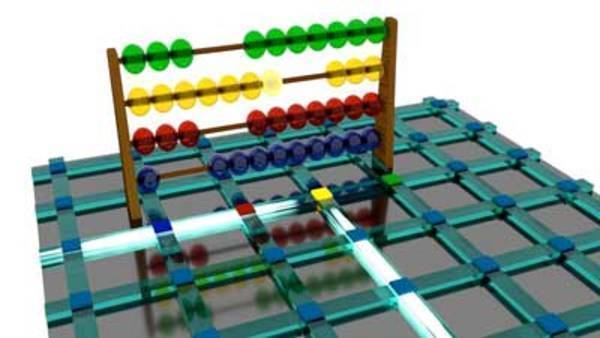
Nanoscale ‘abacus’ uses pulses of light instead of wooden beads to perform calculations
"The quest to develop ever-faster and more powerful computers has led to one of the most rudimentary methods of counting being given a 21st century make-over. An international team of researchers, including Professor C. David Wright from the University of Exeter, have developed a nanoscale optical ‘abacus’ – which uses light signals to perform arithmetic computations. The innovative device works by counting pulses of light – much in the same way beads are used to count when using a conventional abacus - before storing the data. This pioneering new technique could pave the way to new, more powerful computers that combine computing and storage functions in one element – a move away from conventional computers that treat these two functions as separate. The study is published in leading scientific journal, Nature Communications. Prof. C David Wright, an expert in electronic engineering and co-author of the study said: “This device is able to carry out all the basic functions you’d associate with the traditional abacus – addition, subtraction, multiplication and division – but what’s more it can do this using picosecond (one-thousandth of a billionth of a second) light pulses”." [...]
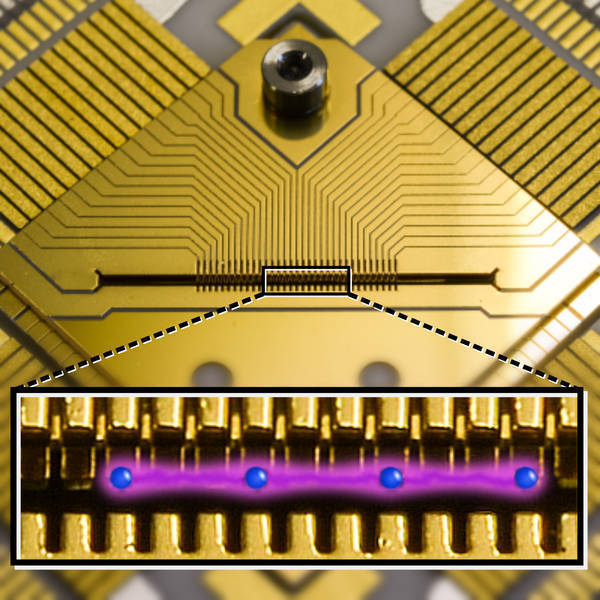
Quantum computing on the move
"A future quantum computer, using "quantum bits" or qubits, might be able to solve problems which are not tractable for classical computers. Scientists are currently struggling to build devices with more than a few qubits, with the challenge arising that the qubits mutually hamper each other’s proper operation. Researchers led by Professor Ferdinand Schmidt-Kaler und Dr. Ulrich Poschinger at Johannes Gutenberg University Mainz (JGU) in Germany have now demonstrated the operation of a four-qubit register comprised of atomic ions trapped in microchip trap. The ion qubits can be freely positioned within the trap, such that laser-driven quantum operations at high accuracy remain possible. The team has realized the generation of an entangled state of the four qubits, where each of the qubits loses its individual identity, but the register as a whole does have a well-defined state. This has been accomplished by sequential operations on pairs of qubits, interleaved with ion movement operations." [...]
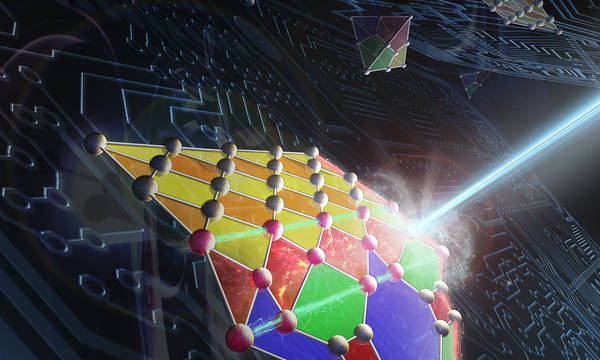
Researchers Develop Data Bus for Quantum Computer
"The quantum world is fragile; error correction codes are needed to protect the information stored in a quantum object from the deteriorating effects of noise. Quantum physicists in Innsbruck have developed a protocol to pass quantum information between differently encoded building blocks of a future quantum computer, such as processors and memories. Future quantum computers will be able to solve problems where conventional computers fail today. We are still far away from any large-scale implementation, however, because quantum systems are very sensitive to environmental noise. Although systems can be protected from noise in principle, researchers have been able to build only small prototypes of quantum computers experimentally. One way to reduce the error rate is by encoding quantum information not in one single quantum particle but in several quantum objects." [...]
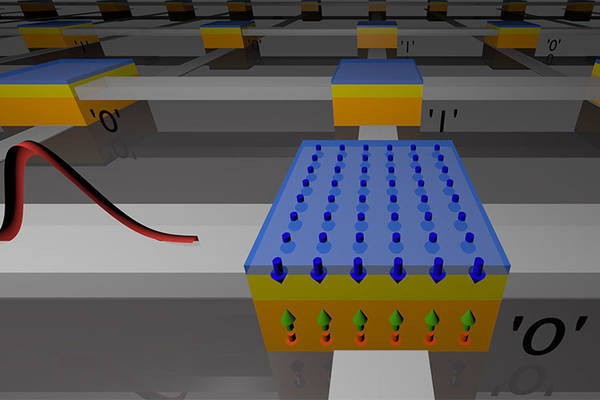
Ultrafast magnetic reversal points the way toward speedy, low-power computer memory
"Researchers at UC Berkeley and UC Riverside have developed a new, ultrafast method for electrically controlling magnetism in certain metals, a breakthrough that could lead to greatly increased performance and more energy-efficient computer memory and processing technologies. The findings of the group, led by Berkeley electrical engineering and computer sciences (EECS) professor Jeffrey Bokor, are published in a pair of articles in the journals Science Advances (Vol. 3, No. 49, Nov. 3, 2017) and Applied Physics Letters (Vol. III, No. 4, July 24, 2017)." [...]

Artificial intelligence aids materials fabrication
"In recent years, research efforts such as the Materials Genome Initiative and the Materials Project have produced a wealth of computational tools for designing new materials useful for a range of applications, from energy and electronics to aeronautics and civil engineering. But developing processes for producing those materials has continued to depend on a combination of experience, intuition, and manual literature reviews. A team of researchers at MIT, the University of Massachusetts at Amherst, and the University of California at Berkeley hope to close that materials-science automation gap, with a new artificial-intelligence system that would pore through research papers to deduce “recipes” for producing particular materials. “Computational materials scientists have made a lot of progress in the ‘what’ to make — what material to design based on desired properties,” says Elsa Olivetti, the Atlantic Richfield Assistant Professor of Energy Studies in MIT’s Department of Materials Science and Engineering (DMSE). “But because of that success, the bottleneck has shifted to, ‘Okay, now how do I make it?’” The researchers envision a database that contains materials recipes extracted from millions of papers. Scientists and engineers could enter the name of a target material and any other criteria — precursor materials, reaction conditions, fabrication processes — and pull up suggested recipes." [...]
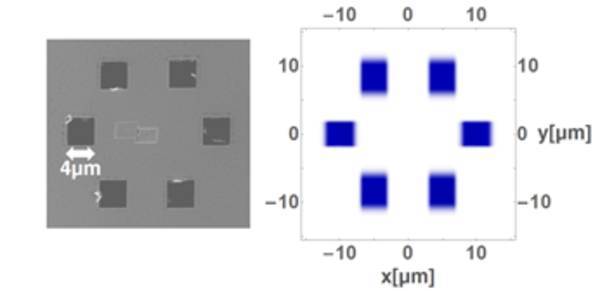
Diffused light shows clear structures
"Physicists develop new method to create images of minute structures Scientists gain an insight into the fascinating world of atoms and molecules using x-ray microscopes. Ground-breaking research by physicists at FAU, the Deutsches Elektronen Synchrotron (DESY) in Hamburg, and the University of Hamburg has paved the way towards new imaging techniques. The team of scientists have successfully developed and tested a method which is considerably more effective than conventional procedures. The researchers’ findings have recently been published in the renowned journal Nature Physics. Conventional methods researchers use to determine the structure of crystals and minerals are based on the coherent scattering of light. In other words, light waves hit a structure and are deflected, but continue to oscillate without their pattern of crests and troughs being distorted or interrupted in any way." [...]
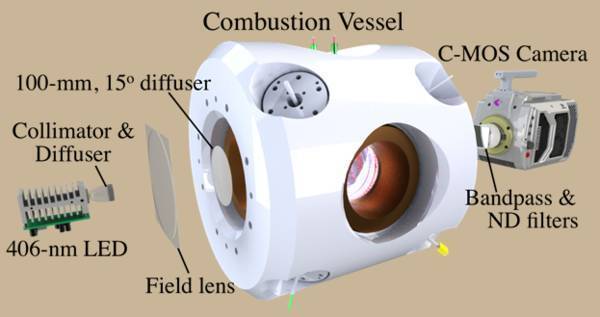
New engine optics to fuel future research
"Sandia team develops optical diagnostic that helps improve fuel economy while reducing emissions A new optical device at Sandia National Laboratories that helps researchers image pollutants in combusting fuel sprays might lead to clearer skies in the future. An optical setup developed by researchers at Sandia’s Combustion Research Facility and the Technical University of Denmark can now quantify the formation of soot — particulate matter consisting primarily of carbon — as a function of time and space for a variety of combustion processes. Initially, the researchers have focused on the combustion of liquid fuel sprays found in engines, where the extreme pressures and temperatures create an environment that is optically challenging. To meet future particulate matter emissions mandates without sacrificing fuel savings, engine developers need advanced combustion strategies to reduce the formation of soot in spray flames. “The acquired data provides important insights into the fuel spray motion as well as the timing and quantity of soot formed under a wide range of conditions,” said Sandia researcher Scott Skeen. “Engine developers can use this information to validate computer models and design advanced engine combustion strategies that will improve fuel economy for consumers while also lowering tailpipe pollutant emissions.” The work was published in an Applied Optics paper titled, “Diffuse back-illumination setup for high temporally resolved extinction imaging” and was selected as a “Spotlight on Optics” by the Optical Society in July." [...]

Synthetic material acts like an insect cloaking device
"Synthetic microspheres with nanoscale holes can absorb light from all directions across a wide range of frequencies, making them a candidate for antireflective coatings, according to a team of Penn State engineers. The synthetic spheres also explain how the leaf hopper insect uses similar particles to hide from predators in its environment. Scientists have long been aware that leaf hoppers extrude microparticles, called brochosomes, and wipe them on their wings. Because the particles are superhydrophobic, the leaf hopper's wings stay dry in wet conditions. What was not understood before the current work is that the brochosomes also allow leaf hoppers and their eggs to blend in with their backgrounds at the wavelengths of light visible to their main predators, such as the ladybird beetle. "We knew our synthetic particles might be interesting optically because of their structure," said Tak-Sing Wong, assistant professor of mechanical engineering and the Wormely Family Early Career Professor in Engineering." [...]

The invisible ink that can be made visible, then invisible, and visible again
"A team from Shanghai Jiao Tong University has developed an ink that can be made visible and invisible repeatedly. The university announced on Thursday that the process will help to keep secrets safer. The research achievement was published in the online magazine Nature Communications. Smart fluorescent materials have been attracting increasing interest for security protection of information or documents that people don't want others know about. Though they are invisible in ordinary conditions, they are not secure as they can easily become visible under UV light. The ink developed with lead ions by the team led by Li Liang, a professor at Shanghai Jiao Tong University, is proving a better choice, the university said." [...]
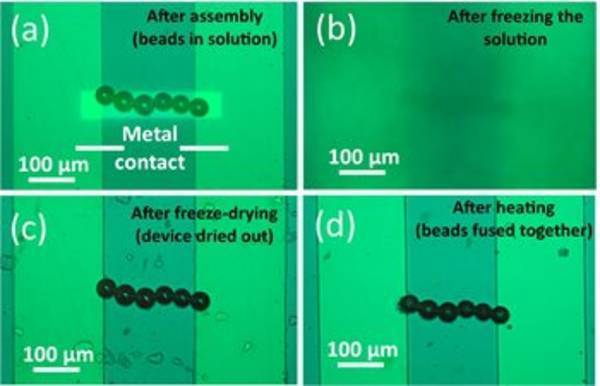
New Approach Uses Light Instead of Robots to Assemble Electronic Components
"An international team of researchers has developed a new light-based manipulation method that could one day be used to mass produce electronic components for smartphones, computers and other devices. A cheaper and faster way to produce these components could make it less expensive to connect everyday objects — from clothing to household appliances — to the internet, advancing the concept known as the Internet of Things. The micromanipulation technique might also be used to create a safer and faster-charging replacement for mobile device batteries. Optical traps, which use light to hold and move small objects in liquid, are a promising non-contact method for assembling electronic and optical devices. However, when using these traps for manufacturing applications, the liquid must be removed, a process that tends to displace any pattern or structure that has been formed using an optical trap. In The Optical Society (OSA) journal Optics Express, researchers in Steven Neale’s Micromanipulation Research Group, University of Glasgow, Scotland, detail their method for using an advanced optical trapping approach known as optoelectronic tweezers to assemble electrical contacts." [...]
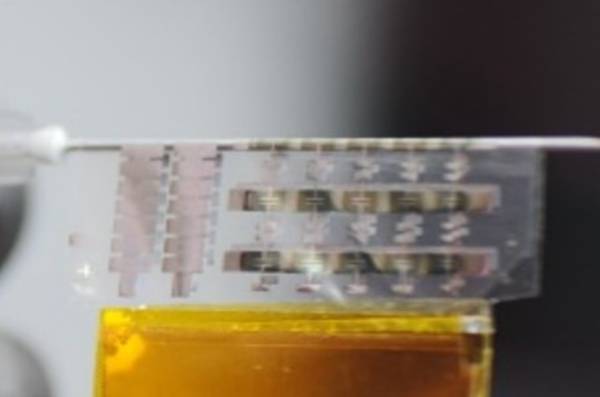
Highly Flexible Organic Flash Memory for Foldable and Disposable Electronics
"A KAIST team reported ultra-flexible organic flash memory that is bendable down to a radius of 300 μm. The memory exhibits a significantly-long projected retention rate with a programming voltage on par with the present industrial standards. A joint research team led by Professor Seunghyup Yoo of the School of Electrical Engineering and Professor Sung Gap Im of the Department of Chemical and Biomolecular Engineering said that their memory technology can be applied to non-conventional substrates, such as plastics and papers, to demonstrate its feasibility over a wide range of applications. With Dr. Seungwon Lee and Dr. Hanul Moon playing the role of leading authors, the research was published in Nature Communications on September 28. Flash memory is a non-volatile, transistor-based data-storage device that has become essential in most electronic systems in daily life. With straightforward operation mechanisms and easy integration into NAND or NOR array architecture, flash memory has been established as the most successful and dominant non-volatile memory technology by far." [...]
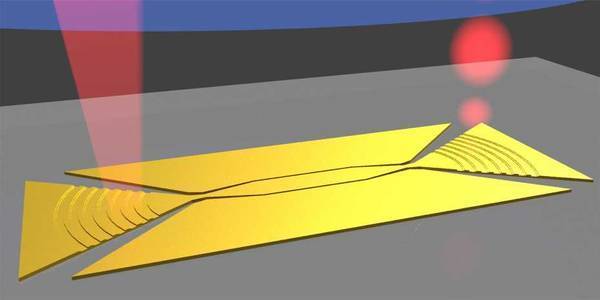
Optoelectronics without glass
"Researchers at ETH Zurich have developed the first opto-electronic circuit component that works without glass and is instead made of metal. The component, referred to as a modulator, converts electrical data signals into optical signals. It is smaller and faster than current modulators, and much easier and cheaper to make. Optical components for microelectronics must be made of glass. Metals are not suitable for this purpose, since optical data can propagate only across roughly a distance of 100 micrometres. This was the general view of scientists until recently." [...]
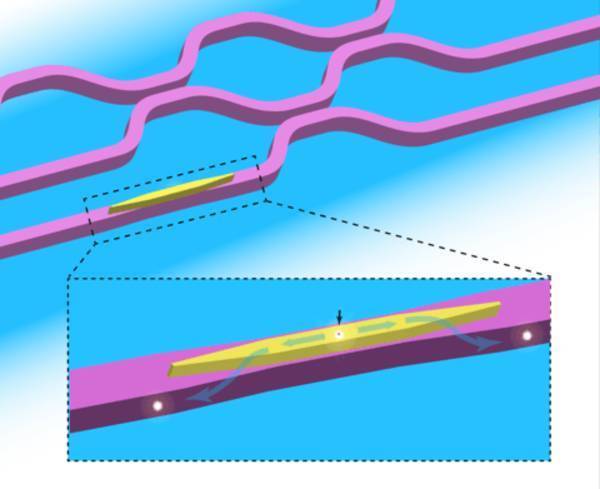
Hybrid Circuit Combines Single-Photon Generator and Efficient Waveguides on One Chip
"New architecture could prove essential for high-performance quantum photonic circuits Scientists at the National Institute of Standards and Technology (NIST) and their collaborators have taken a new step forward in the quest to build quantum photonic circuits—chip-based devices that rely on the quantum properties of light to process and communicate information rapidly and securely. The quantum circuit architecture devised by the team is among the first to combine two different types of optical devices, made from different materials, on a single chip—a semiconductor source that efficiently generates single particles of light (photons) on demand, and a network of “waveguides” that transports those photons across the circuit with low loss. Maximizing the number of photons, ideally having identical properties, is critical to enabling applications such as secure communication, precision measurement, sensing and computation, with potentially greater performance than that of existing technologies. The architecture, developed by Marcelo Davanco and other NIST researchers along with collaborators from China and the U.K., employs a nanometer-scale semiconductor structure called a quantum dot—made from indium arsenide—to generate individual photons on the same chip as the optical waveguides—made from silicon nitride. Combining these two materials requires special processing techniques. Such hybrid circuit architectures could become building blocks for more complex systems." [...]
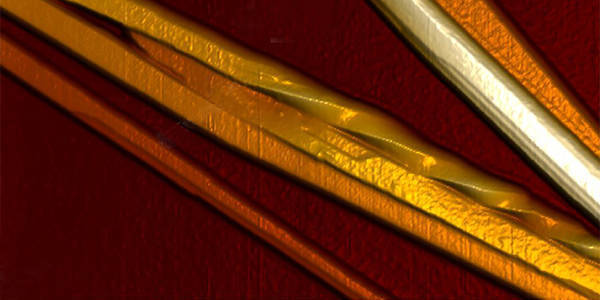
Transforming fibrils into crystals
"An international team of researchers have discovered a new type of transition in protein folding: amyloid crystals formed from amyloid fibrils by a decrease in energy. The crystals are even more stable than the fibrils, which are responsible for a number of serious neurodegenerative diseases in humans. Amyloid fibrils are infamous for the role they play in serious neurological diseases in humans, such as Parkinson’s or Alzheimer’s. One trigger for Alzheimer’s disease is the misfolding and aggregation of proteins such as tau and ABeta. This causes the formation of tiny fibrils that then accumulate in the brain. Specialists refer to these fibres as amyloid fibrils." [...]
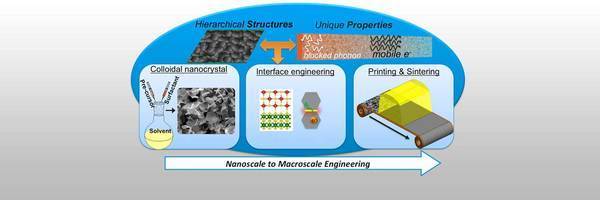
Additive manufacturing may hold key to transforming nanomaterials into multifunctional devices
"Nanomaterials have been widely studied and proven to have unique properties that make them more suited to a variety of applications. However, there is still a need to better understand their structure and property evolutions from nanoscale to macroscale as well as transform nanoscale materials into functional devices using scalable and low-cost manufacturing processes Yanliang Zhang, assistant professor of aerospace and mechanical engineering and participating faculty member in the Center for Nano Science and Technology and the Center for Sustainable Energy at the University of Notre Dame, is working to do both. He and his team in the Advanced Manufacturing and Energy Lab are developing an innovative and highly scalable additive manufacturing process that may hold the key to transform the nanomaterials into multifunctional devices. Their work aims to fabricate high-performance and flexible energy harvesters, sensors and electronic devices, an area that is undergoing tremendous growth. Zhang and his team are focusing their efforts on two projects in particular, one funded through a National Science Foundation (NSF) CAREER Development Award and one funded through the U.S. Department of Energy (DOE) — both targeting additive manufacturing to convert colloidal nanocrystals into functional devices of unprecedented performances. Through the NSF project, they will be studying the additive printing and sintering processes of colloidal nanocrystals to control thermoelectric and electronic properties in printed structures." [...]

Need Entangled Atoms? Get 'Em FAST! With NIST’s New Patent-Pending Method
"Physicists at the National Institute of Standards and Technology (NIST) have come up with a way to link a group of atoms’ quantum mechanical properties among themselves far more quickly than is currently possible, potentially providing a tool for highly precise sensing and quantum computer applications. NIST has applied for a patent on the method, which is detailed in a new paper (link is external) in Physical Review Letters. The method, which has not yet been demonstrated experimentally, essentially would speed up the process of quantum entanglement in which the properties of multiple particles become interconnected with one other. Entanglement would propagate through a group of atoms in dramatically less time, allowing scientists to build an entangled system exponentially faster than is common today. Arrays of entangled atoms suspended in laser light beams, known as optical lattices, are one approach to creating the logic centers of prototype quantum computers, but an entangled state is difficult to maintain more than briefly. Applying the method to these arrays could give scientists precious time to do more with these arrays of atoms before entanglement is lost in a process known as decoherence." [...]
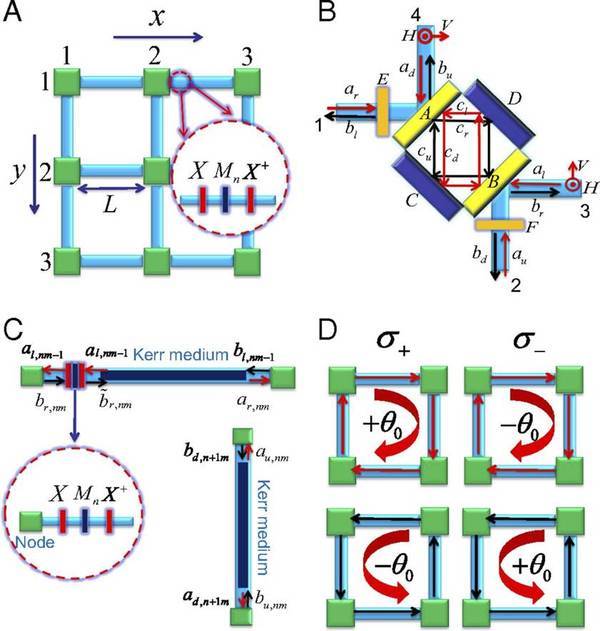
A new concept for a unidirectional waveguide
"A team of scientist at MPQ and Caltech proposes the realization of two-dimensional topological insulators by classical optical networks. In the past decade, a new type of material has attracted raising attraction: the so-called topological insulator. This class of materials exhibits a very peculiar property: they behave like insulators in the interior, but contain conducting states at their boundaries. As these states are “topologically” protected (see below), the states are very robust against imperfections, and electric currents can flow almost without any dissipation. This makes these materials extremely interesting for the task of quantum communication and quantum computing, for example. Now Dr. Tao Shi (at present Chinese Academy of Sciences, Beijing) and Prof. Ignacio Cirac from the Max Planck Institute of Quantum Optics in Garching, together with Prof. Jeff Kimble from the California Institute of Technology (Pasadena, USA), have developed a detailed scheme for an experimental setup to realize a 2-dimensional topological insulator with classical optical networks (Proceedings of the National Academy of Sciences of the United States of America, AOP 10 October 2017)." [...]

General Purpose Arm – Robot that Transfers Physical Sensations
"Researchers at the Faculty of Science and Technology have developed a high precision robot that transfers physical sensations back to the user. Called the General Purpose Arm, it was developed in collaboration with the Haptics Research Center. The technology was announced at a press conference with a demonstration on September 28 at Keio’s Yagami Campus, which is the home to the Faculty of Science and Technology. Assistant Professor Takahiro Nozaki, who is affiliated to the Department of System Design Engineering, explained the technology which transfers not only sight and sound back to the user, but also touch and movement. This could have many different applications including manufacturing, farming, medicine, and nursing care. Professor Toshiyuki Murakami, also of the Department of System Design Engineering and Professor Kouhei Ohnishi, the Director of the Haptics Research Center, was also present to field questions to a roomful of reporters and science communicators." [...]
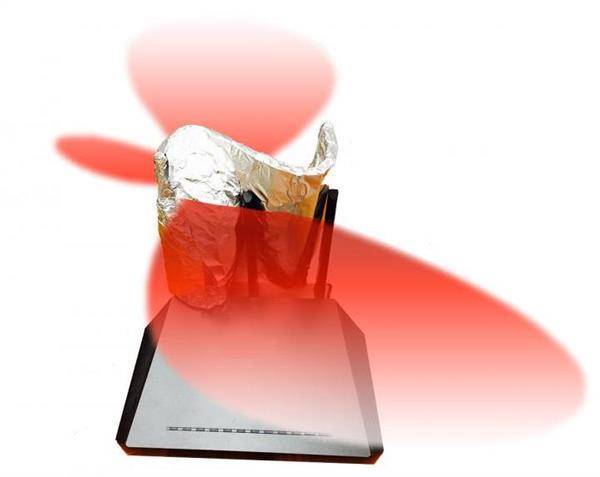
A 'virtual wall' that improves wireless security and performance
"A team of researchers led by Dartmouth College may have finally solved the problem of how to inexpensively improve wireless signal strength for indoor spaces with multiple rooms. The same technology for enhancing office and home Wi-Fi signals can also be used to strengthen wireless security. The research, to be presented on Wednesday, November 8, at ACM's BuildSys 2017 in Delft, Netherlands, relies on 3-D printing to produce a cheap, customized reflector that directs wireless signals to where users need them most. "Through this single solution, we address a number of challenges that plague wireless users," said Xia Zhou, an assistant professor of computer science at Dartmouth. "Not only do we strengthen wireless signals, we make those same signals more secure." Customizing the coverage of wireless networks inside buildings is critical for users to improve signal reception in desired areas while weakening signals in others." [...]
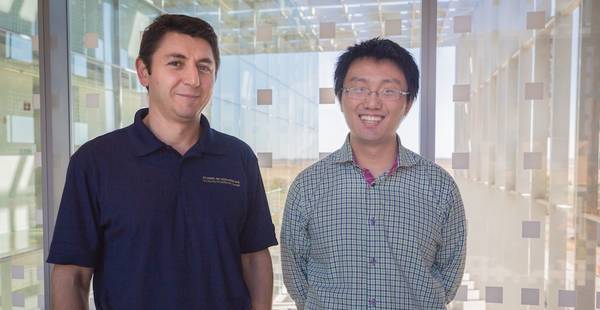
Computer Scientists Aid in Major Astronomical Discovery
"In a major advance in astronomy, scientists announced last month that they had observed two neutron stars colliding, a never-before-seen cosmic event that made headlines the world over — and two UC Merced computer scientists were instrumental in making it happen. Computer science Professor Florin Rusu and fourth-year graduate student Weijie Zhao, coauthors on one of the groundbreaking papers published in Science, see it as a victory for their field as well. The data processing tools they developed enabled astronomers to determine that they were indeed observing something unprecedented. Astronomers received the first signal of a momentous cosmic event on Aug. 17, when the Laser Interferometer Gravitational-Wave Observatory (LIGO) detected gravitational waves — literal ripples in the fabric of spacetime. That’s when terrestrial observatories began searching for their source. Ground-based telescopes scoured the skies looking for the luminous bursts of electromagnetic radiation (EMR) that should accompany any cosmic event energetic enough to produce gravitational waves detectable on earth." [...]
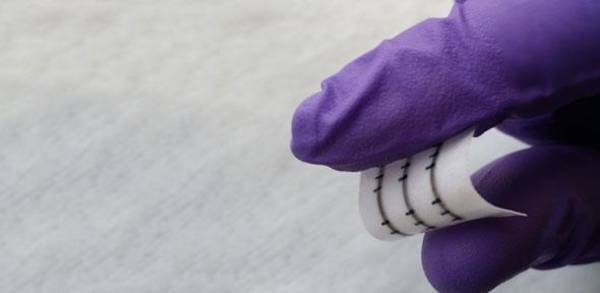
Fully integrated circuits printed directly onto fabric
"Researchers have successfully incorporated washable, stretchable and breathable electronic circuits into fabric, opening up new possibilities for smart textiles and wearable electronics. The circuits were made with cheap, safe and environmentally friendly inks, and printed using conventional inkjet printing techniques. The researchers, from the University of Cambridge, working with colleagues in Italy and China, have demonstrated how graphene – a two-dimensional form of carbon – can be directly printed onto fabric to produce integrated electronic circuits which are comfortable to wear and can survive up to 20 cycles in a typical washing machine. The new textile electronic devices are based on low-cost, sustainable and scalable inkjet printing of inks based on graphene and other two-dimensional materials, and are produced by standard processing techniques. The results are published in the journal Nature Communications. Based on earlier work on the formulation of graphene inks for printed electronics, the team designed low-boiling point inks, which were directly printed onto polyester fabric." [...]
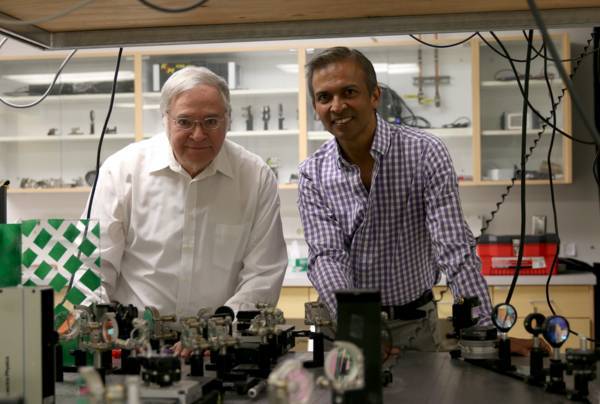
Lightning-fast Communications
"A mineral discovered in Russia in the 1830s known as a perovskite holds a key to the next step in ultra-high-speed communications and computing. Researchers from the University of Utah’s departments of electrical and computer engineering and physics and astronomy have discovered that a special kind of perovskite, a combination of an organic and inorganic compound that has the same structure as the original mineral, can be layered on a silicon wafer to create a vital component for the communications system of the future. That system would use the terahertz spectrum, the next generation of communications bandwidth that uses light instead of electricity to shuttle data, allowing cellphone and internet users to transfer information a thousand times faster than today. The new research, led by University of Utah electrical and computer engineering professor Ajay Nahata and physics and astronomy Distinguished Professor Valy Vardeny, was published Monday, Nov. 6 in the latest edition of Nature Communications. The terahertz range is a band between infrared light and radio waves and utilizes frequencies that cover the range from 100 gigahertz to 10,000 gigahertz (a typical cellphone operates at just 2.4 gigahertz). Scientists are studying how to use these light frequencies to transmit data because of its tremendous potential for boosting the speeds of devices such as internet modems or cell phones." [...]
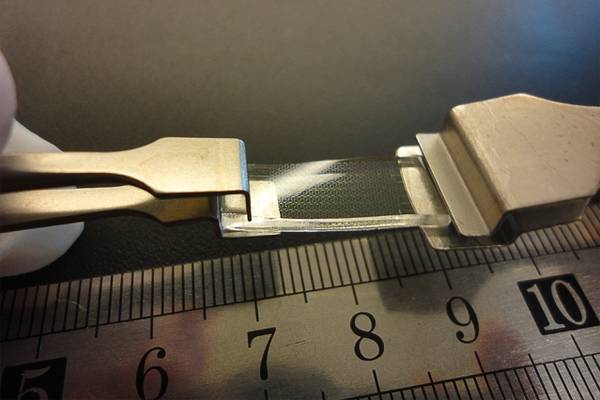
Researchers develop flexible, stretchable photonic devices
"Researchers at MIT and several other institutions have developed a method for making photonic devices — similar to electronic devices but based on light rather than electricity — that can bend and stretch without damage. The devices could find uses in cables to connect computing devices, or in diagnostic and monitoring systems that could be attached to the skin or implanted in the body, flexing easily with the natural tissue. The findings, which involve the use of a specialized kind of glass called chalcogenide, are described in two papers by MIT Associate Professor Juejun Hu and more than a dozen others at MIT, the University of Central Florida, and universities in China and France. The paper is slated for publication soon in Light: Science and Applications. Hu, who is the Merton C. Flemings Associate Professor of Materials Science and Engineering, says that many people are interested in the possibility of optical technologies that can stretch and bend, especially for applications such as skin-mounted monitoring devices that could directly sense optical signals. Such devices might, for example, simultaneously detect heart rate, blood oxygen levels, and even blood pressure." [...]

New quantum materials offer novel route to 3D electronic devices
"Researchers have shown how the principles of general relativity open the door to novel electronic applications such as a three-dimensional electron lens and electronic invisibility devices. In a new study funded by the Academy of Finland, Aalto University researchers Alex Westström and Teemu Ojanen propose a method to go beyond special relativity and simulate Einstein’s theory of general relativity in inhomogeneous Weyl semimetals. The theory of Weyl metamaterials combines ideas from solid-state physics, particle physics and cosmology and points a way to fabricate metallic designer materials where charge carriers move like particles in curved space-time. The researchers propose Weyl metamaterials, a generalisation of Weyl semimetals, that enable new types of electronic devices through geometry engineering. “The systems we introduced offer a route to make the charge carriers move as if they were living in a curved geometry, providing a tabletop laboratory for simulating curved-space quantum physics and certain cosmological phenomena,” Alex Westström explains. Weyl semimetals are an example of recently discovered quantum materials that have received a lot of attention." [...]
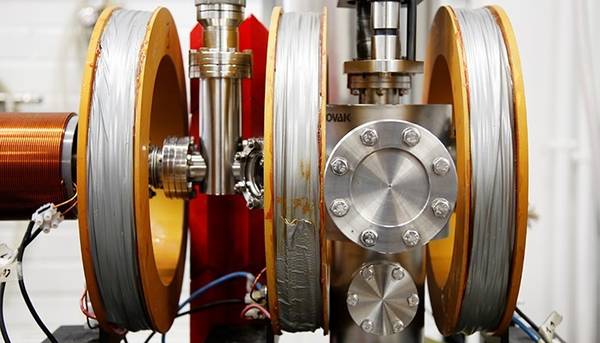
The next generation of power electronics? Gallium nitride doped with beryllium
"Physicists at Aalto University have made a breakthrough in revising methods largely discarded 15 years ago. They have discovered a microscopic mechanism that will allow gallium nitride semiconductors to be used in electronic devices that distribute large amounts of electric power. The trick is to be able to use beryllium atoms in gallium nitride. Gallium nitride is a compound widely used in semiconductors in consumer electronics from LED lights to game consoles. To be useful in devices that need to process considerably more energy than in your everyday home entertainment, though, gallium nitride needs to be manipulated in new ways on the atomic level. “There is growing demand for semiconducting gallium nitride in the power electronics industry." [...]

New method developed to 3D print fully functional electronic circuits
"Researchers at the University of Nottingham have pioneered a breakthrough method to rapidly 3D print fully functional electronic circuits. The circuits, which contain electrically-conductive metallic inks and insulating polymeric inks, can now be produced in a single inkjet printing process where a UV light rapidly solidifies the inks. The breakthrough technique paves the way for the electronics manufacturing industry to produce fully functional components such as 3D antennae and fully printed sensors from multiple materials including metals and plastics. The new method combines 2D printed electronics with Additive Manufacturing (AM) or 3D printing - which is based on layer-by-layer deposition of materials to create 3D products. This expands the impact of Multifunctional Additive Manufacturing (MFAM), which involves printing multiple materials in a single additive manufacturing system to create components that have broader functionalities. The new method overcomes some of the challenges in manufacturing fully functional devices that contain plastic and metal components in complex structures, where different methods are required to solidify each material." [...]

Two-dimensional materials unlock the path to ultra-low-power transistors
"An international team of scientists has discovered a new route to ultra-low-power transistors using a graphene-based composite material. As transistors are squeezed into ever smaller areas within computer chips, the semiconductor industry struggles to contain overheating in devices. Now researchers from the University of York and Roma Tre University believe the solution lies in composite materials built from monolayers of graphene and the transition metal dichalcogenide (TMDC).They discovered these materials could be used to achieve a fine electrical control over the electron’s spin – its tiny compass needle. The new research, published today in the journal Physical Review Letters, could lead the way to much needed low-energy consumption electronics. Applications Lead researcher Dr Aires Ferreira, of the University of York’s Department of Physics, said: “For many years, we have been searching for good conductors allowing efficient electrical control over the electron’s spin. “We found this can be achieved with little effort when two-dimensional graphene is paired with certain semiconducting layered materials." [...]
Projetos Maker
Diversos Projetos interessantes.
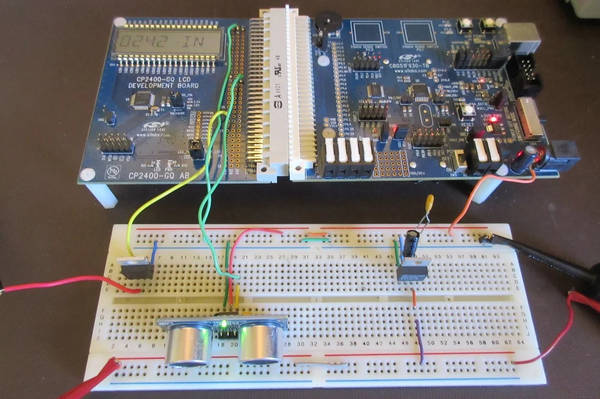
How to Interface an Ultrasonic Sensor with an LCD Using a Microcontroller Dev Kit
"Let's interface an ultrasonic sensor and a lighting system! In this project, we're going to design a system that uses an ultrasonic sensor to trigger a lighting system and an LCD as an information screen. To show the system in action, we're making a non-contact garage parking sensor system using a C8051 microcontroller development kit and the Simplicity Studio IDE. The measured distance will be displayed on the LCD screen, and two LED floodlights will activate as a function of the distance between the vehicle and the sensor. System Requirements and Applications The system we're building here has the following features and requirements: Proximity/detection sensor: The ultrasonic distance sensor serves as a proximity/detection sensor. When an object is detected, it must constantly, in real time and with minimal time lag, measure the distance to a moving object." [...]
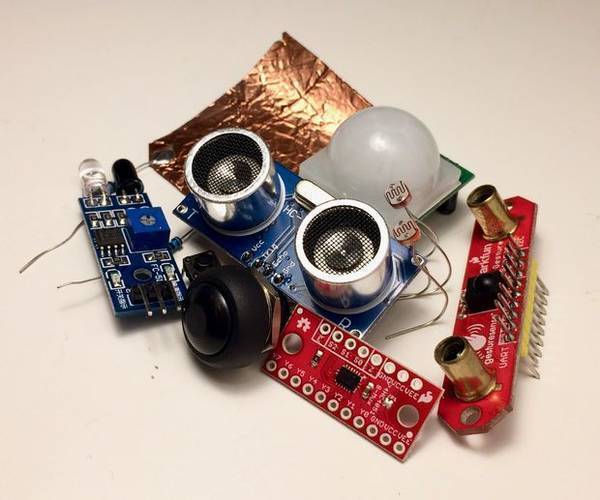
Selecting the Right Sensor for Arduino Projects
"There are many types of sensors available that enable you to interact with electronics, and so it can be difficult to decide which one is best to use for a project. Furthermore, many tutorials show how to use a single sensor with an Arduino, but it can be unclear how to use lots of them in a project that requires lots of detectors (e.g. laser harps, interactive LED tables, etc.). In this instructable, I will review some sensors (listed below) and focus on how to use them with an Arduino. In addition to the review, I will provide some pros and cons for using each one of these sensor types in Arduino projects that require lots of sensors and explain what to do when there are more sensors than there are pins on the Arduino. Hopefully, this instructable will help you pick the best sensor for your project and understand how to wire many of them up so that they can be used with an Arduino." [...]
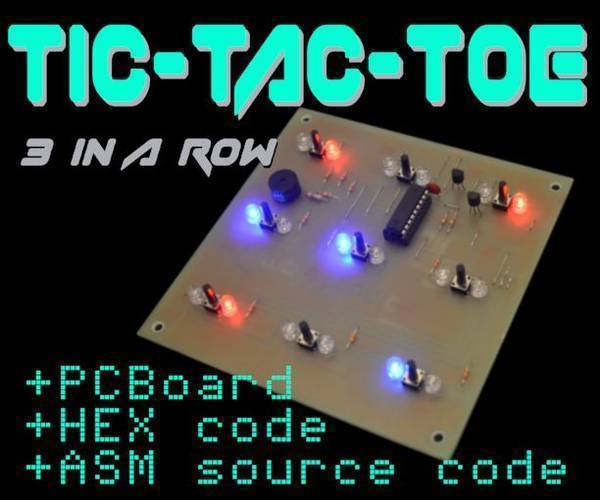
Tic Tac Toe ( 3 in a Row )
"This project is an electronic recreation of the classic Tic-Tac-Toe pencil & paper 2 player game. The heart of the circuit is Microchips PIC 16F627A microcontroller. I have included download link for a PC board PDF and also the HEX code for the chip burning. You will also find the assembly source code there. In a future Instructable, I will propose a"good looking"enclosure with large back-lit buttons. " [...]

LED Acrylic & Wood Cube Lights
"These wood and acrylic LED cubes feature a really cool glow. They utilize RGB light strips, they are daisy chained together and powered with a 5 volt source. So the idea is to use one remote to operate any number of cubes - so one cube passes along power to the other cube and so forth. We use USB cables to create that connection, and they need to have four wires inside, to pass along all that color info. " [...]
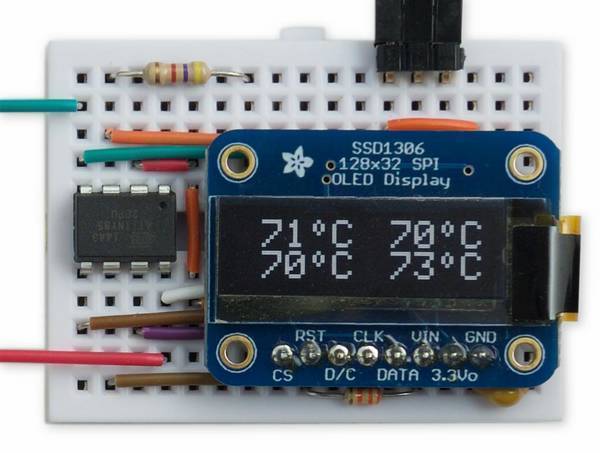
Four-Channel Thermometer on OLED display
"This article describes a four-channel thermometer that monitors the temperature at four temperature sensors, and gives a continuous readout on a small 128x32 OLED display: It could be used in any application where you want to monitor multiple temperatures, such as in controlling a greenhouse, checking the output transistors in a power amplifier, monitoring key points in an overclocked gaming PC, monitoring the chips on a Raspberry Pi, or checking the temperature in different rooms in a home. Here's an example of using the Four-Channel Thermometer to monitor the temperature of the power transistors in a Class A power amplifier: Introduction The Four-Channel Thermometer uses an ATtiny85 to read the data from four DS18B20 or MAX31820 temperature sensors, using the 1-Wire protocol, and display the temperatures on a small OLED display. For the display I chose a 128x32 OLED display, a small display about 2.5cm (1") wide with a very clear, bright monochrome display, and an SPI interface, available from Adafruit [1] or Proto-PIC in the UK [2]. A similar display is also available from Aliexpress [3]. For the sensors I used DS12B20 [4] temperature sensors in a TO-92 transistor package, which have a supply range of 3.0V to 5.5V. The MAX31820 [5] is equivalent and cheaper, but has a maximum supply voltage of 3.7V." [...]

Controlling your Raspberry Pi with Telegram CLI
"In this project, we will be building upon our Telegram tutorial by showing you how to utilize Telegram to control your Raspberry Pi. We will be doing this by utilizing the LUA interpreter that is built into the Telegram CLI which opens it up to quite a wide variety of functionality. Basically, the LUA interpreter allows us to program certain functions that trigger when something occurs on the Telegram CLI, such as it receiving a message. This allows us to do certain actions based on the received message, the two simple tasks we will be showing you how to do is a simple receive message and reply, and also how to setup the Telegram CLI so we can trigger an outside bash script and upload a photo automatically. Before proceeding with the tutorial, ensure that you have completed our Telegram CLI tutorial as that sets up the basis for this guide. " [...]

High Voltage Capacitor Charger for Photo-Flash Using LT3751
"The project is built for professional photo flash systems. Circuit generates high voltage from low voltage battery to operate a photo-flash tube. The project can also be used in other applications like high voltage capacitor charger, emergency strobe, high voltage power supply, security, detonators etc. LT3751 is the heart of the project. The LT3751 is a high voltage input flyback controller designed to rapidly charge a large capacitor to a user-adjustable high target voltage set by the transformer turns ratio and three external resistors. Optionally, a feedback pin can be used to provide a low noise high voltage regulated output." [...]

SIGHT: For the Blind
"A pair of smart glasses for the blind. Powered by Android Things and TensorFlow. Ever thought how is the life of a blind person, Their life is full of risk. They can't even walk alone through a busy street or through a park. They shall need some assistance from others. They are also curious about the beauty of the world, they should have will be the excitement to explore the world, and to be aware of what is happening in front of them." [...]

Telegram Bot with ESP8266
"Divine control of ESP8266 with telegram bot. Hi fellow coders, It's amazing to start my Hackster career with telegram bot API and ESP8266. Through this project I try to depict how to control ESP8266 with telegram bot which opens to the great world of IoT. 1 . Installing Telegram Bot Library First of all download Telegram Bot library (download) and add it to Arduino IDE. 2." [...]
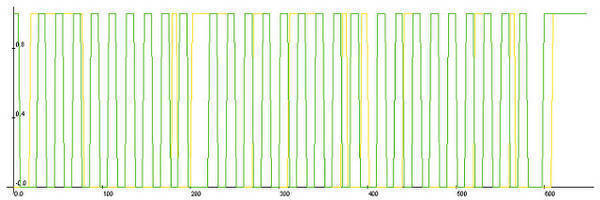
Arduino I2C Sniffer
"I’m working on an I2C project, but I don’t have a sampling oscilloscope and I need to see what the heck is going on, so I put together this quick and dirty I2C sniffer sketch. You connect two digital pins on the Arduino to the I2C bus lines SDA and SCL, and Arduino ground to I2C ground. The digital pins on the Arduino must be on PORTD, which are pins 0 through 7. It’s probably a good idea to avoid the serial lines, which means you should use any two pins between 2 and 7. It captures the data (within a certain time window) and then it sends CSV-formatted output to the serial port. You can then take this data and plot it to get an idea of what’s going on on your I2C bus." [...]
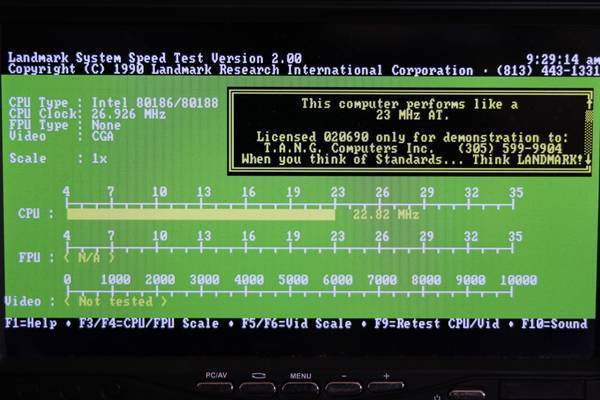
S80186: 16-bit 80186 compatible IP core
"The S80186 IP core is a compact, 80186 binary compatible core, implementing the full 80186 ISA suitable for integration into FPGA/ASIC designs. The core executes most instructions in far fewer cycles than the original Intel 8086, and in many cases, fewer cycles than the 80286. The core is supplied as synthesizable SystemVerilog, along with a C++ reference model, extensive tests, a reference BIOS implementation and reference FPGA designs. The core is released under the GPLv3 license. Architecture The S80186 is a 16-bit architecture with 8 16-bit general purpose registers, 4 segment registers allowing access to 1MB of physical memory. The architecture uses a variable length instruction encoding allowing for high code density." [...]
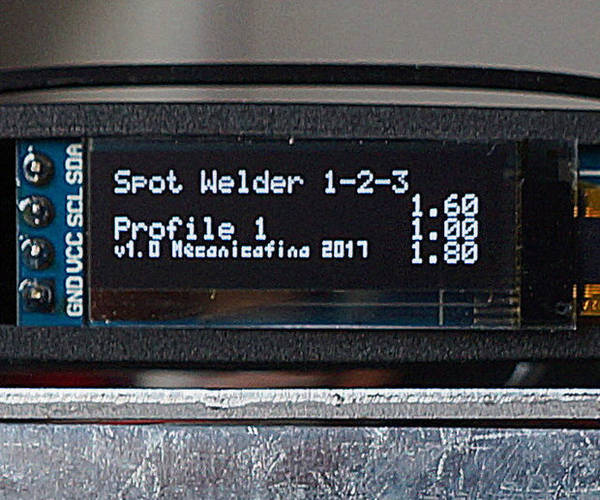
Spot Welder 1-2-3 Arduino Firmware
"Why another spot welder project?Building a spot welder is one of the (arguably few) cases in which you can build something for a fraction of the price of the commercial version with comparable quality. And even if build-before-buy were not a winning strategy, it is a lot of fun! So I decided to embark on the project, and I looked at how other people have done this. There is literally a ton of interesting information and videos about this on the net, with quite a wide variation in quality of design and build. The quality of the build that one can realistically achieve depends on the tooling, machines, and facilities available, so it was not surprising to see quite a wide variation on this front. On the other hand, I was not expecting to see that most projects just use a simple manual switch to start and stop the welding process." [...]
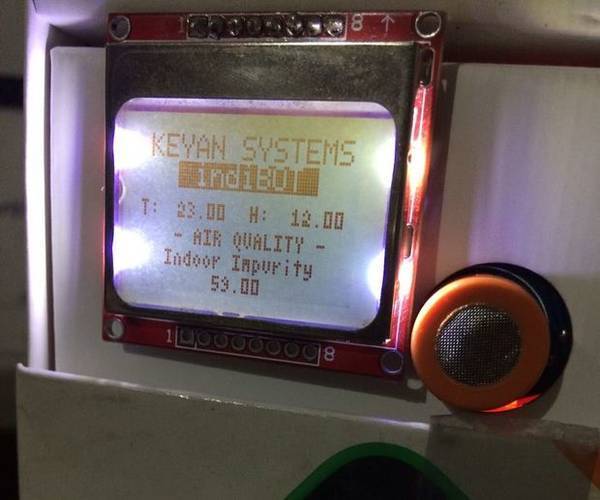
Air Quality Monitor - Using a Mobile Phone Package Box
"Hello Friends, Here is another great use of package-boxes that are lying around which otherwise would sadly be thrown away. This is an old Nokia Package-box reused to make an 'Air Quality Monitor'!! Actually you can make any electronic prototypes you like out of these boxes which are made of tough card boards or plastics. Checkout how its done here. Things needed... 1. Arduino Board 2." [...]
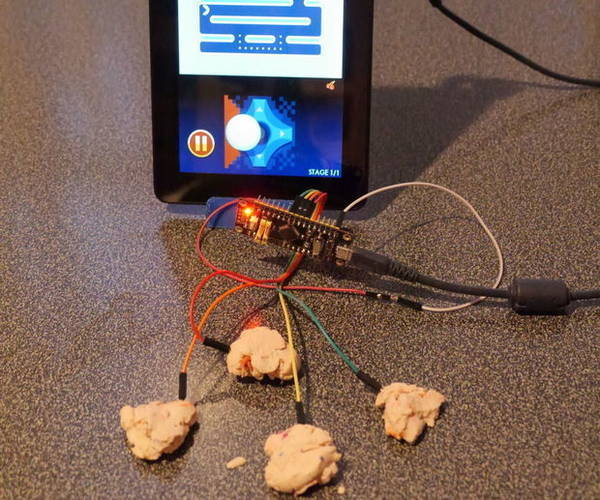
$3 Alternative to Makey Makey
"The Makey Makey is a great little device that emulates a USB keyboard and lets you make keys out of any somewhat conductive thing (aluminum foil, bananas, play dough, etc. ), which can then be used as a controller for games and educational projects. The Makey Makey has two downsides: (1) cost and (2) the need for a ground connection. This project is a cheap alternative using a $2 STM32F1 board and capacitive sensing. It only has 10 inputs as opposed to the Makey Makey's 12, but it has the advantage that in addition to emulating a keyboard, it can emulate a USB gamepad controller (digital joystick). Parts: "black pill" STM32F103c8 board ($1.90 on Aliexpress) breadboard (less than $1 on Aliexpress) and jumper wires; or just a bunch female-to-male dupont connectors ($0.70 on Aliexpress for a pack of 40) paperclips, alligator clips, etc.Tools: computer UART-to-USB adapter for initial board programming (an Arduino Uno or Mega will do the job, as will a cheap CH340 unit) soldering ironThe software is an example sketch included with my ADCTouchSensor library which allows for capacitive sensing with a single pin on the STM32F1 board per sensor (it's based on martin2250's library for AVR)." [...]
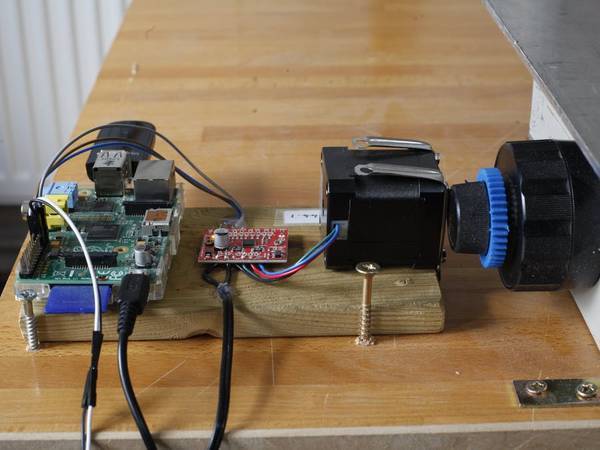
Driving the focus stacking rail using a Raspberry Pi
"The Raspberry Pi drives the focus stacking rail to achieve tiny micron movements of the camera towards the photographic subject. Hardware This project is a sub-section of my larger project on focus stacking of fern gametophytes. This section explains what hardware is required for a Raspberry Pi-driven system, and how it is all wired up. We are only covering the electronics here and the other hardware is discussed in the main page. The full setup This is the full setup from above. At the top, the microscope block is connected via cogs to the stepper motor." [...]
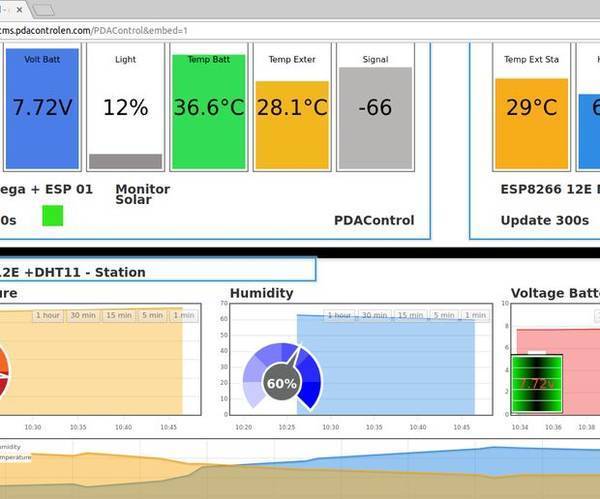
View Dashboards Emoncms & ESP8266 + Arduino #IoT
"For a long time I have tested the Emoncms platform and in this opportunity I will show you the end result and the quality of the dashboards and / or visualizations. I have taken some tutorials that will serve as intermediate steps. We will visualize a dashboard created in emoncms, from several devices, update time and dynamism of the widgets and graphics. In this tutorial we will not detail the hardware even though, although they are real data, the final hardware is still in development. Technically there are 3 devices: 1- Arduino Mega 2560 + ESP8266 01(SOLAR MONITOR) - 2 Temperature Measurement (Onewire) - 2 Measurements DC voltages (conditioning) - 1 Light Intensity Measurement (LDR) 2- Very easy charging circuit LM317, for -1 Battery acid 6v 1.2Ah -1 10W Solar Panel 3- Esp8266 12E NodeMCU Lolin (SOLAR STATION) -1 DHT 11 Temperature and Humidity Rel The idea 1 analyze the behavior of the solar panel. The idea 2 so far is to feed the ESP8266 12E 24/7 consuming 80mA without sleep mode." [...]

Instructables View Counter
"Subscriber counters for Youtube and Facebook are quite common, but why not make something similar for Instructables?That's exactly what we're going to do: in this instructable, we'll make an Instructables view counter! The views will have to be captured from the interwebs, so we'll use the common (and cheap) ESP8266 WiFi module to get the required information. It needs some configuration, but I'll go through all the steps required to get it up and running. To keep the project as accessible as possible (i.e., not requiring a 3D printer, laser cutter or particle accelerator), I decided to use Lego for the case! So get out that bin of Lego and let's get building! " [...]

Traffic Counting System Based on OpenCV and Python
"Introduction:Traffic counts, speed and vehicle classification are fundamental data for a variety of transportation projects ranging from transportation planning to modern intelligent transportation systems Traffic Monitoring and Information Systems related to vehicles cascade. In addition to vehicle counts, a much larger set of traffic parameters such as vehicle classifications, lane changes, parking areas etc., can be measured in such type of systems. In large metropolitan areas, there is a need for data about vehicle classes that use a particular highway or a street. " [...]

Simple Weather Station with NodeMCU, Arduino and ThingSpeak
"Build a weather station driven by a NodeMCU (esp8266) board written and Arduino and send the gathered data to ThingSpeak. SWS (Simple Weather Station) A Simple Weather Station controlled by a NodeMCU dev board writen in Arduino which reports data through ThingSpeak. About the ESP8266 Wikipedia: The ESP8266 is a low-cost Wi-Fi chip with full TCP/IP stack and MCU (microcontroller unit) capability produced by Shanghai-based Chinese manufacturer, Espressif Systems. Click here to access the full article Main features Humidity and temperature measurement via DHT11. Atmospheric pressure and temperature via BMP180. Luminosity measurement with an LDR." [...]
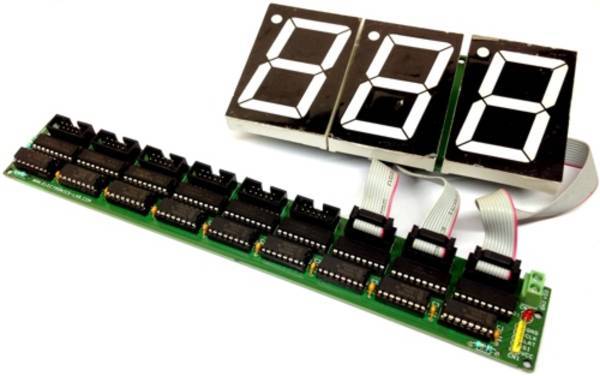
72 Channels Serial To Parallel Driver Board Using 74HC595 & ULN2803
"72 channels Serial (SPI) to parallel driver board has been designed for various applications. This project can be used as multi Solenoid driver, large size 7 segment display driver, bar graph driver, and LED driver. The project works with 5V logic levels. Output load supply 12V-48V DC and each output can drive 500mA load. I have used 3 digits 2.3Inch 7 segment displays as an example, this board can handle up to 9 digits. The board can serve many applications like, Stop Watch, digital timer, counter, score board, token display and lot more." [...]

Chilled Drinkibot
"On a hot day, what's better than a nice cold beverage? Nothing, that's what! Here's a fun way to make made-to-order chilled drinks without using ice (which can dilute things), the Chilled Drinkibot! The Chilled Drinkibot is a termoelectric cooler that uses a Peltier cooler, a large heat sink and fan, and a small pump to chill and then deliver your beverage to your waiting glass. It uses a Trinket M0 running CircuitPython to control things, and a temperature gauge to display your final chill value. Parts and Materials In addition to the parts listed below, you'll also need a small conductive cup, preferably copper or something silver plated, and material to mount the components." [...]
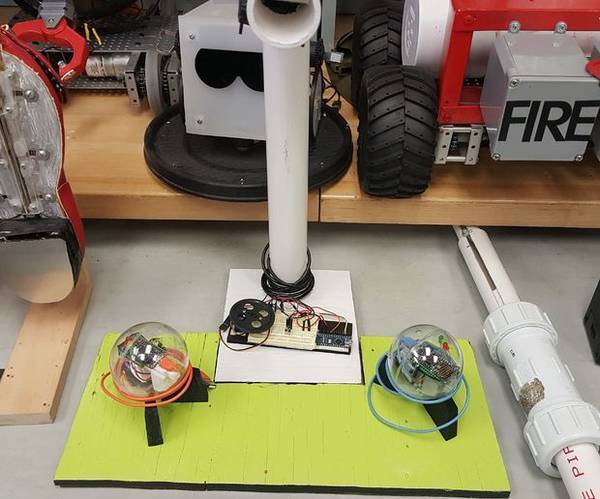
IR Communication in Swarming Robotics for Search and Rescue
"The IR Communication robots are a swarm and will work around the physical barrier making communication between the surface and underneath the surface possible. The robots are capable of signaling a red, yellow, or green LED individually. Red signifies that a zone is dangerous. Yellow signifies that a zone is to passable with caution. Green means that the zone is most likely for a rescuer to revisit for survivors. This will enable the survivors to be closer together and more probable to being rescued because the rescuers will have a better knowledge of where the survivors are located." [...]
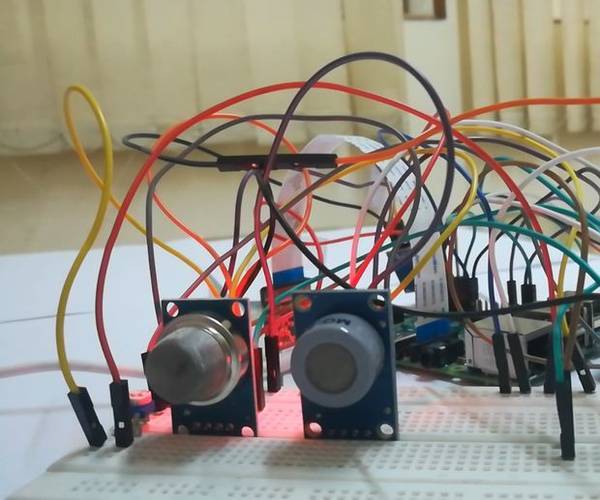
Home Monitoring System for Elderly Persons
"Hello friends, here we are with one more tutorial and that is home monitoring system for elderly persons. Now, we can not see and care our relatives all the time, so for that we can make one system in which we can monitor our elderly relatives. In this case we are going to take care about smoke detection, temperature and humidity of the room, fire in the room, door bell monitoring and carbon monoxide detection. So here we are going to monitor these 6 things for our elderly relatives. " [...]
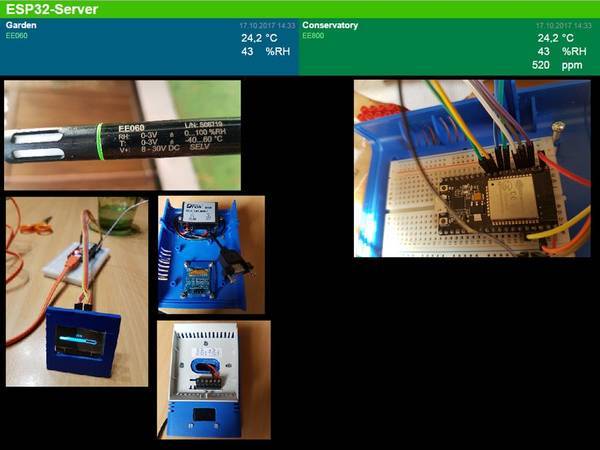
ESP32 BLE environmental gatt server
"Use ESP32 with an industrial grade sensor as BLE server. This is part ONE from a series of projects connected together. In general the resulting solution consists of several parts which are: Sensors "Hubs" A webserver (including a database) Apps (universal Windows and Android) The goal is to monitor my environment at home. For this series I cover 3 areas where I use different technologies for each single element. Let's start with the conservatory (winter garden) and the garden next to it. For this I use an ESP32 NodeMCU - a cheap device including Bluetooth (BLE is used in this case) WiFi (used to transfer the data to a different hub and act as web server) Several analog inputs (I use 5 of them) I2C - used to run a display Touch input - used as a kind of buttons Approach one - get environmental data from the garden." [...]

Weather Clock
"Great looking desktop clock with date & weather display. " [...]
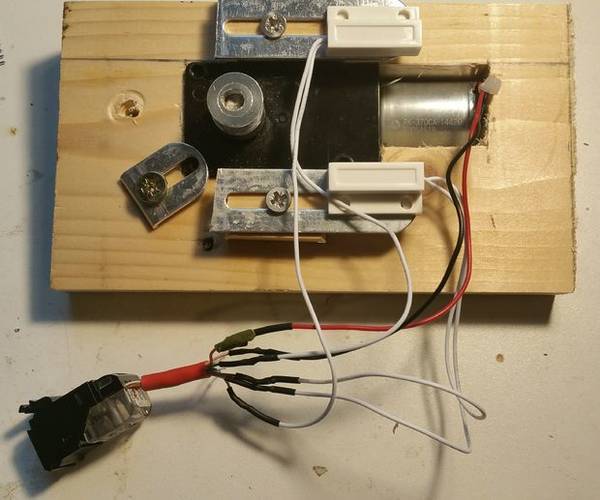
Automatic Curtain With Arduino
"Project time ! : Automatic curtain opener/closer. I did see some other projects for closing and opening (automatically) the curtains, I certainly wanted to build one myself now. Most other designs I saw were built using a fishing line. I did not want to use a fishing line, because fishing lines always will break at some point ? For this automatic curtain I used a teethed timing belt (with metallic enforcement, so very strong) and a timing pully wheel (20 teeth), which are also used for some 3d printers." [...]
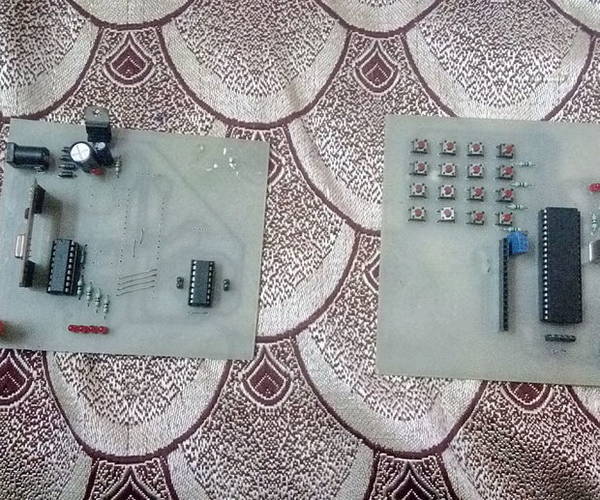
Digital Wireless Security System
"In the Instructable, we are going build a Prototype of digital wireless security systems using RF Technology. The project can be used for security purposes in home, offices, organizations etc.Since it's built with RF Technology and it's secured it most cheap and reliable system for small-scale purpose in industries. Details about the projects: It can have a range of 100-150 meters but its range can be increased with increase in length in the antenna. It is built with a keypad 4*4 interfaced with PIC 16F887 microcontroller and LCD. Data that is sent through keypad is display onto the LCD 16*2.When the password is entered it checks the password that is stored in EEPROM memory of the microcontroller. When the password is correct, it sends the signal wirelessly with the help of RF modules and it can controller anything with the help of controlling circuit." [...]

Phone Calling Arduino Robot Using Dtmf Decoder
"hello guys.. our new and one of the best project phone calling arduino robot using dtmf decoder module based on arduino... What is DTMF?DTMF is a Dual Tone Multiple Frequency decoder module which has a MT8870 DTMF decoder IC which decodes DTMF tone signal to digital signal that are acceptable for arduino digitally. Here an aux wire is needed for connecting DTMF module to phone. " [...]
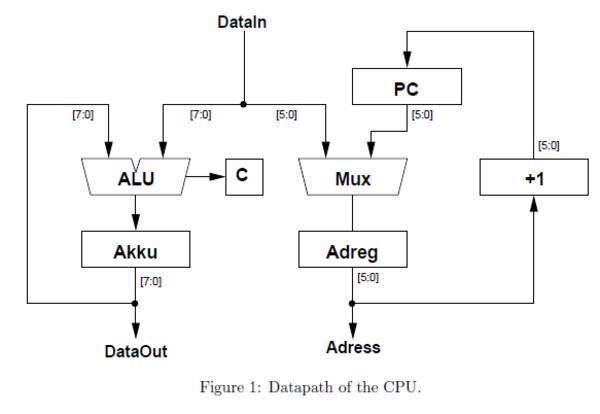
MCPU - Minimal CPU for a 32 Macrocell CPLD
"MCPU is a minimal cpu aimed to fit into a 32 Macrocell CPLD - one of the smallest available programmable logic devices. While this CPU is not powerful enough for real world applications it has proven itself as a valuable educational tool. The source code is just a single page and easily understood. Both VHDL and Verilog versions are supplied. The package comes with assembler, emulator and extensive documentation. This is an old project from 2001." [...]
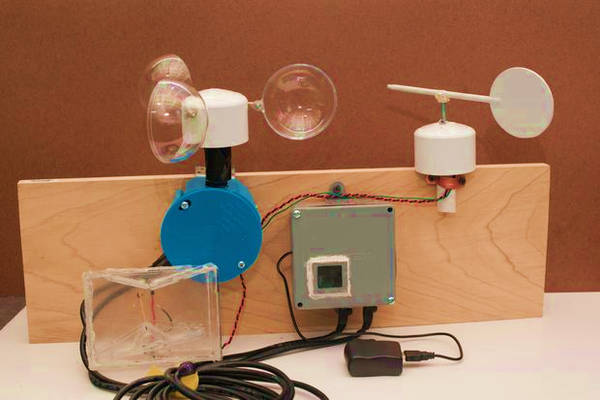
How to Build a Raspberry Pi Weather Station
"A few months back, I was wondering how weather stations work. How do they acquire and display data? I decided it would be a great IoT project to make. I did a little research and found some commercial systems I could base mine off, as well as some online tutorials to help with some of the sensor or Raspberry Pi concepts. This is a complete Raspberry Pi weather system with just the base Raspberry Pi hardware, camera, and some assorted analog and digital sensors to make our measurements. No buying pre-made anemometers or rain gauges — we are making our own!" [...]
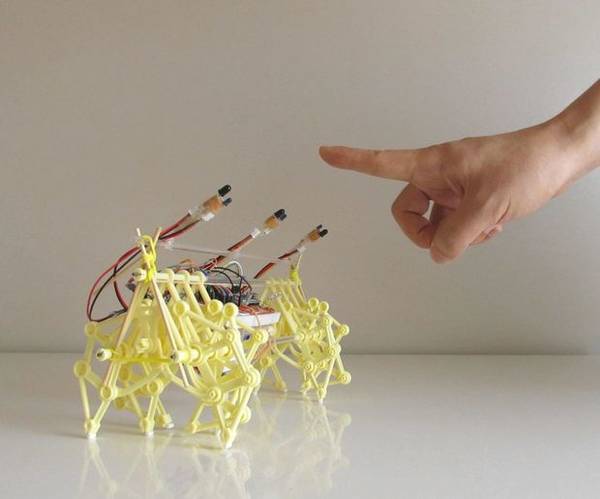
Training Theo Jansen's Mini BEEST
"Let's make a little table-top beast and train it in stages! The origin of this beast has been created by Theo Jansen. He named it "STRAND-BEEST" and he is dreaming of it shall settle in wild. Against his dream, we tame it as a table-top beast. You are the master of it. You make it act at your command with simple tools." [...]

WebUSB
"WebUSB enabled LOL shield, so anybody can change the text without any Arduino programming knowledge. Chrome supportChrome 61, released in October 2017, supports WebUSB. The idea is simple. You connect an USB device, a popup appears and clicking it will open a website. On this site, you can change settings on the USB device, download data etcetera. It works on every operating system, there's no local software to install and it's always up to date.Google provides instructions to build you own WebUSB device with an Arduino Leonardo." [...]
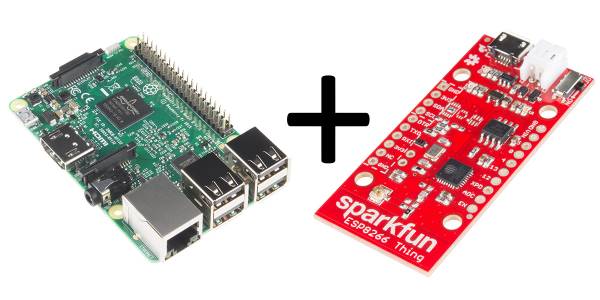
Using Flask to Send Data to a Raspberry Pi
"In this tutorial, we’ll show you how to send data from cheap WiFi nodes to a Raspberry Pi over an internal WiFi network. It relies on the Flask framework for Python, which is a relatively simple-to-use method of creating a web application that can execute Python scripts. We’ll use a Raspberry Pi 3 and SparkFun ESP8266 Thing to demonstrate. We’re going to send a very simple signal from the Thing board to the RasPi - just a signal to turn an attached LED on or off. Hopefully, it’ll be obvious from the example how to send more complex signals and run more complex scripts upon receipt. " [...]

How to Build a Socket for ESP03 WiFi8266
"As everyone knows, the ESP WiFi8266 family, excluding ESP 01, has a 2 mm pitch instead of 2.54 as all standard integrated circuits. This makes it difficult to use them especially if you want to make them movable when replacing or you need to reprogram them. The idea is then to solder the ESP module on female connectors with 2mm pitch that will slip on male connectors, always with 2mm pitch, which in turn will be soldered onto the PCB. This system is particularly useful when booting the firmware, thus preventing the part of communication with the PC where the IDE resides. Once you need to reprogram the module, simply pull it out of your PCB and put it on the programming board. With this Instructable I show you how to build the programming board using the 2mm pitch connectors." [...]
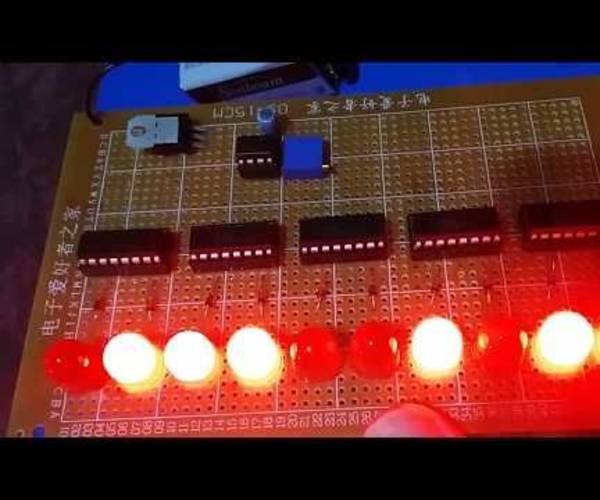
10 Bits Binary Counter
"This is a binary counter that can count from 0 to 1023 because it's a 10 bits binary counter. However, it needs 10-1N914 diodes like interface between the counter and the 10-10mm LEDs used in this project. The counter is also integrated by 10-JK Flip-Flops; that is, 5-IC74LS76s and an IC555 timer for generating the clock. " [...]

Modifying a Robot FLR D2-2
"I want to reprogram a robot D2-2 which is really cheap (see Banggood for example). The controller supplied is an AT89C2051, and I don't have the IDE, the programmer and the time to learn, so I decided to remove the AT89C2051 and to try using a PIC. I have chosen a 16F690 because I have plenty but you can try with another one as long as it has the same pin diagram (for example the 16F1507 is nice). It is very easy and simple to do! You only need the microcontroller (and a PICKit). " [...]

IoT Food Feeder for Animals
"In this project we will be building an IOT liquid food dispenser system for pets and other animals. This project if implemented for welfare of stray animals( dogs , cat , birds etc) or preventing biodiversity loss then it can help us to achieve smart city in an environment sector. This IOT Liquid food dispenser device can be used for commercial (by users having pet) as well as for social welfare (for stray animals , birds). Our device consist of Liquid (it can be water or milk) feeder bowl which is connected with Liquid level sensor, pumping motor, micro controller, main Liquid tank ,disposable water tank and WI-FI module that connects device to internet .the data from sensors are given to web API(Thingspeak) which is linked to our webpage(my blog) which finally provide monitoring to the user. Also, the embedded device will be self automated that manages Liquid present in the bowl from the tank and independently monitors the Liquid level details that will be provided on our webpage in order to track whether the Liquid is present in the tank or not . Beside this in Bowl the user don't need to worry if the Liquid get dirty as this device can dispose automatically disposes water after some duration of time ." [...]
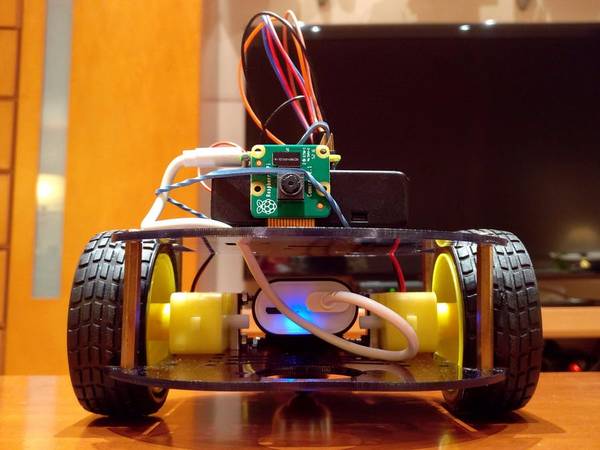
Raspberry Pi Web-Controlled Robot With Video
"Simple Raspberry Pi web-controlled robot with video live streaming. A web controlled Raspberry Pi Zero W Robot with live video streaming. This is something I built in order to bother my cats. Main features Controlled via web browser (which gives you the SUPER POWER of scaring your cats when not at home) Live video streaming." [...]
That's all Folks!


